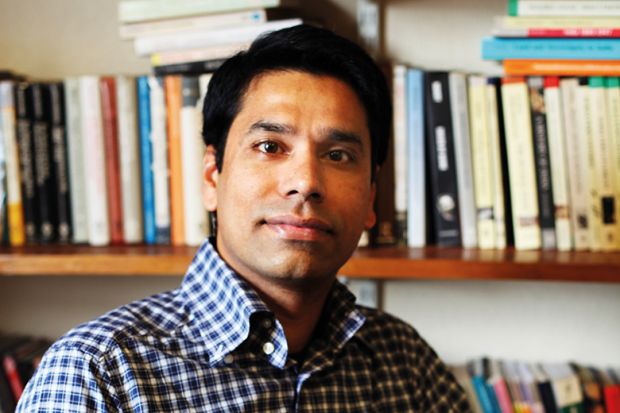What sort of books inspired you as a child?
“Inspired” is perhaps too strong a word. I read eclectically; there were the usual British authors that anglophone, middle-class Indian children tended to encounter: Enid Blyton, Lewis Carroll, Richmal Crompton, etc. But one Indian writer who caught my imagination very early on was R.K. Narayan. I was instantly captivated by his debut novel Swami and Friends, a story in which cricket figures prominently. On the cusp of my teens, I read P.G. Wodehouse’s cricket stories and he quickly became a favourite.
Your new book, ‘Cricket Country’, describes an ‘All-India’ tour of Great Britain and Ireland in the year 1911. Which books first piqued your interest in the role of cricket in the development of Indian identity?
I was 10 years old when I read my first book on Indian cricket. An uncle who worked in a prominent publishing house presented me with a copy of Edward Docker’s History of Indian Cricket. I did not understand much of what I read. But I was gripped by its arresting opening chapter, which described in vivid detail a match played at the Bombay Gymkhana between the “Hindus” and the first MCC [Marylebone Cricket Club] team to visit India. Much later, I read works by Ashis Nandy and Ramachandra Guha, which located Indian cricket within its wider historical context.
Can you recommend some other books about Indian visitors to the UK before independence in 1948?
Antoinette Burton’s At the Heart of the Empire: Indians and the Colonial Encounter in Late-Victorian Britain; Shompa Lahiri’s Indians in Britain: Anglo-Indian Encounters, Race and Identity, 1880-1930; Rozina Visram’s Ayahs, Lascars and Princes: Indians in Britain, 1700-1947; and the same author’s Asians in Britain: 400 Years of History.
Which earlier books have been useful models for an account which combines detailed descriptions of events on the pitch with the wider political context?
I found four works very useful in reflecting on the relationship between sport and society: C.L.R. James’ classic, Beyond a Boundary, a masterly account of cricket and identity in the Caribbean; Ramachandra Guha’s wide-ranging social history of Indian cricket, A Corner of a Foreign Field: The Indian History of a British Sport; David Underdown’s superb study of the origins of English cricket, Start of Play: Cricket and Culture in Eighteenth-Century England; and Mike Marquesee’s coruscating critique of English cricket in the late 20th century, Anyone but England: Cricket, Race and Class.
What is the last book you gave as a gift, and to whom?
Karin Fossum’s The Water’s Edge, to a close friend. Crime fiction is a favourite genre and Fossum is a great writer. She is on top form in this novel: a taut, beautifully constructed tale featuring her best-known literary creation, Inspector Konrad Sejer.
What books do you have on your desk waiting to be read?
Richard Eaton’s India in the Persianate Age, 1000-1765; Richard J. Evans’ Eric Hobsbawm: A Life in History; Gareth Stedman Jones’ Karl Marx: Greatness and Illusion; Patrick French’s The World Is What It Is: The Authorized Biography of V.S. Naipaul; and Penelope Fitzgerald’s The Knox Brothers.
Prashant Kidambi is professor of colonial urban history at the University of Leicester. His latest book is Cricket Country: An Indian Odyssey in the Age of Empire (Oxford University Press).


